PERK/eIF-2α/CHOP Pathway Dependent ROS Generation Mediates Butein-induced Non-small-cell Lung Cancer Apoptosis and G2/M Phase Arrest
- PMID: 31360107
- PMCID: PMC6643215
- DOI: 10.7150/ijbs.33790
PERK/eIF-2α/CHOP Pathway Dependent ROS Generation Mediates Butein-induced Non-small-cell Lung Cancer Apoptosis and G2/M Phase Arrest
Abstract
Butein, a member of the chalcone family, is a potent anticarcinogen against multiple cancers, but its specific anti-NSCLC mechanism remains unknown. The present study examined the effects of butein treatment on NSCLC cell lines and NSCLC xenografts. Butein markedly decreased NSCLC cell viability; inhibited cell adhesion, migration, invasion, and colony forming ability; and induced cell apoptosis and G2/M phase arrest in NSCLC cells. Moreover, butein significantly inhibited PC-9 xenograft growth. Both in vivo and in vitro studies verified that butein exerted anti-NSCLC effect through activating endoplasmic reticulum (ER) stress-dependent reactive oxygen species (ROS) generation. These pro-apoptotic effects were reversed by the use of 4- phenylbutyric acid (4-PBA), CHOP siRNA, N-acetyl-L-cysteine (NAC) and Z-VAD-FMK (z-VAD) in vitro. Moreover, inhibition of ER stress markedly reduced ROS generation. In addition, in vivo studies further confirmed that inhibition of ER stress or oxidative stress partially abolished the butein-induced inhibition of tumor growth. Therefore, butein is a potential therapeutic agent for NSCLC, and its anticarcinogenic action might be mediated by ER stress-dependent ROS generation and the apoptosis pathway.
Keywords: Apoptosis; Butein; Endoplasmic reticulum stress; Non-small-cell lung cancer; Oxidative stress.
Conflict of interest statement
Competing Interests: The authors have declared that no competing interest exists.
Figures

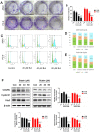
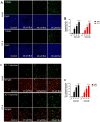
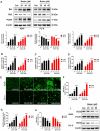



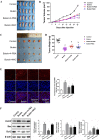
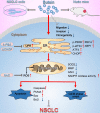
Similar articles
-
Ampelopsin induces cell growth inhibition and apoptosis in breast cancer cells through ROS generation and endoplasmic reticulum stress pathway.PLoS One. 2014 Feb 13;9(2):e89021. doi: 10.1371/journal.pone.0089021. eCollection 2014. PLoS One. 2014. PMID: 24551210 Free PMC article.
-
ROS-mediated PERK-eIF2α-ATF4 pathway plays an important role in arsenite-induced L-02 cells apoptosis via regulating CHOP-DR5 signaling.Environ Toxicol. 2020 Oct;35(10):1100-1113. doi: 10.1002/tox.22946. Epub 2020 Jun 7. Environ Toxicol. 2020. PMID: 32506763
-
Gambogic Acid Shows Anti-Proliferative Effects on Non-Small Cell Lung Cancer (NSCLC) Cells by Activating Reactive Oxygen Species (ROS)-Induced Endoplasmic Reticulum (ER) Stress-Mediated Apoptosis.Med Sci Monit. 2019 May 29;25:3983-3988. doi: 10.12659/MSM.916835. Med Sci Monit. 2019. PMID: 31138775 Free PMC article.
-
β-elemene regulates endoplasmic reticulum stress to induce the apoptosis of NSCLC cells through PERK/IRE1α/ATF6 pathway.Biomed Pharmacother. 2017 Sep;93:490-497. doi: 10.1016/j.biopha.2017.06.073. Epub 2017 Jun 30. Biomed Pharmacother. 2017. PMID: 28672279
-
The Role of the PERK/eIF2α/ATF4/CHOP Signaling Pathway in Tumor Progression During Endoplasmic Reticulum Stress.Curr Mol Med. 2016;16(6):533-44. doi: 10.2174/1566524016666160523143937. Curr Mol Med. 2016. PMID: 27211800 Free PMC article. Review.
Cited by
-
Interplay between endoplasmic reticulum stress and non-coding RNAs in cancer.J Hematol Oncol. 2020 Dec 2;13(1):163. doi: 10.1186/s13045-020-01002-0. J Hematol Oncol. 2020. PMID: 33267910 Free PMC article. Review.
-
Anticancer Potential of Natural Chalcones: In Vitro and In Vivo Evidence.Int J Mol Sci. 2023 Jun 19;24(12):10354. doi: 10.3390/ijms241210354. Int J Mol Sci. 2023. PMID: 37373500 Free PMC article. Review.
-
Long noncoding RNA 01534 maintains cancer stemness by downregulating endoplasmic reticulum stress response in colorectal cancer.Ann Gastroenterol Surg. 2022 Dec 29;7(3):458-470. doi: 10.1002/ags3.12649. eCollection 2023 May. Ann Gastroenterol Surg. 2022. PMID: 37152770 Free PMC article.
-
The antitumor mechanisms of aerobic exercise: A review of recent preclinical studies.Cancer Med. 2021 Sep;10(18):6365-6373. doi: 10.1002/cam4.4169. Epub 2021 Aug 13. Cancer Med. 2021. PMID: 34387383 Free PMC article. Review.
-
Capecitabine Can Induce T Cell Apoptosis: A Potential Immunosuppressive Agent With Anti-Cancer Effect.Front Immunol. 2021 Sep 7;12:737849. doi: 10.3389/fimmu.2021.737849. eCollection 2021. Front Immunol. 2021. PMID: 34557199 Free PMC article.
References
-
- Ettinger DS, Akerley W, Borghaei H. et al. Non-small cell lung cancer, version 2.2013. Journal of the National Comprehensive Cancer Network: JNCCN. 2013;11:645–53. - PubMed
-
- Devarakonda S, Morgensztern D, Govindan R. Genomic alterations in lung adenocarcinoma. The Lancet Oncology. 2015;16:e342–51. - PubMed
-
- Pandey MK, Sandur SK, Sung B. et al. Butein, a tetrahydroxychalcone, inhibits nuclear factor (NF)-kappaB and NF-kappaB-regulated gene expression through direct inhibition of IkappaBalpha kinase beta on cysteine 179 residue. The Journal of biological chemistry. 2007;282:17340–50. - PubMed
-
- Alshammari GM, Balakrishnan A, Chinnasamy T. Butein protects the nonalcoholic fatty liver through mitochondrial reactive oxygen species attenuation in rats. BioFactors. 2018;44:289–98. - PubMed
-
- Bai X, Ma Y, Zhang G. Butein suppresses cervical cancer growth through the PI3K/AKT/mTOR pathway. Oncology reports. 2015;33:3085–92. - PubMed
Publication types
MeSH terms
Substances
LinkOut - more resources
Full Text Sources
Research Materials

